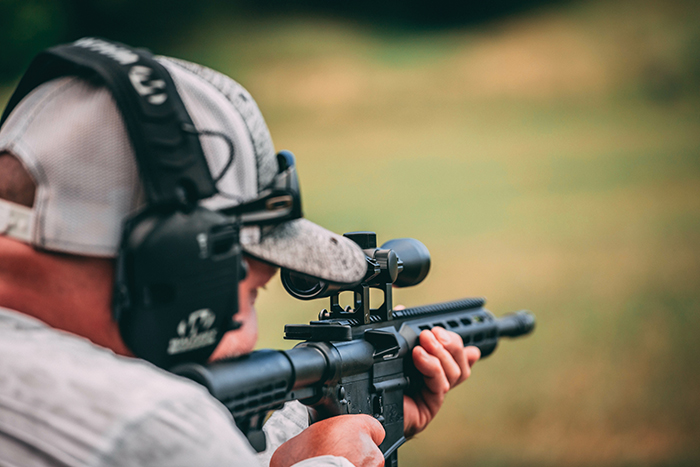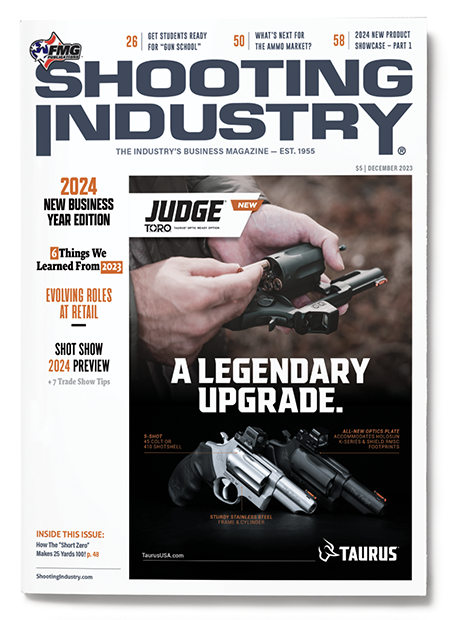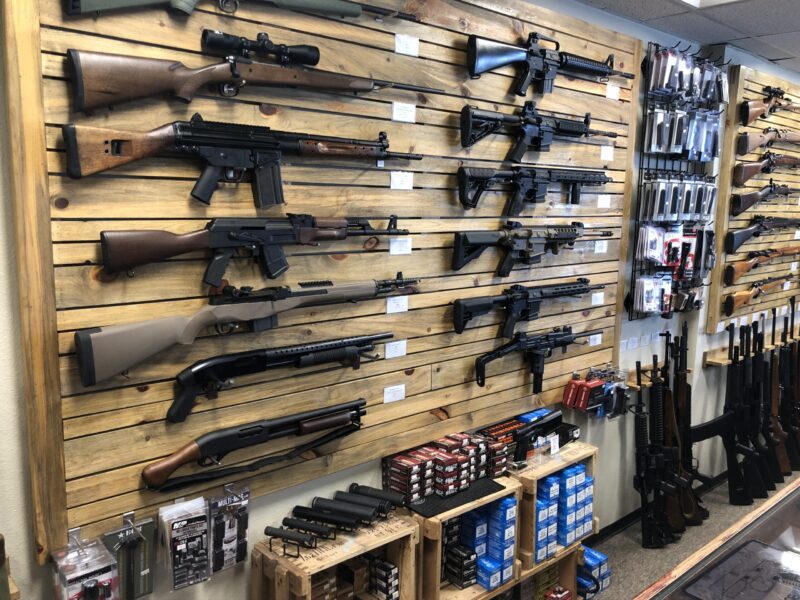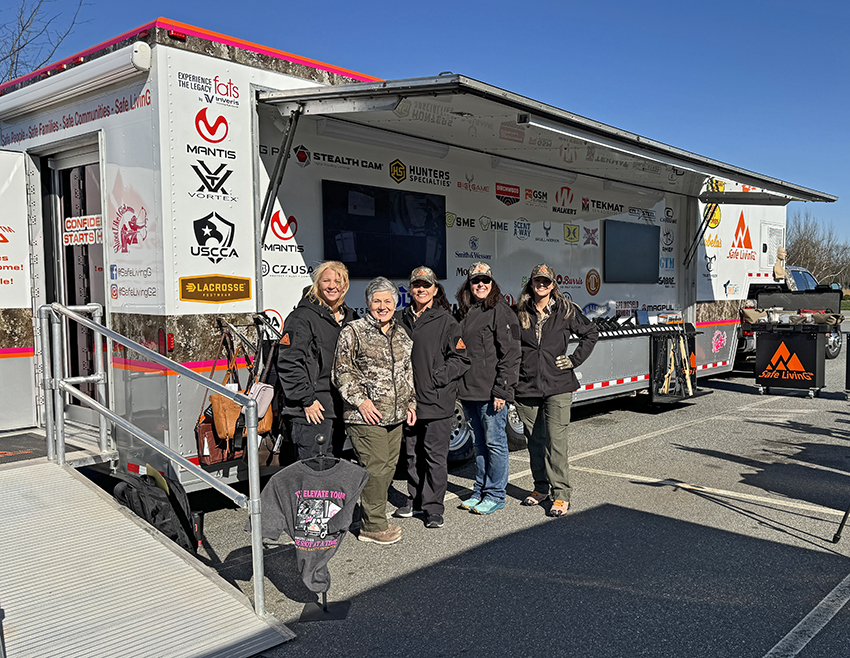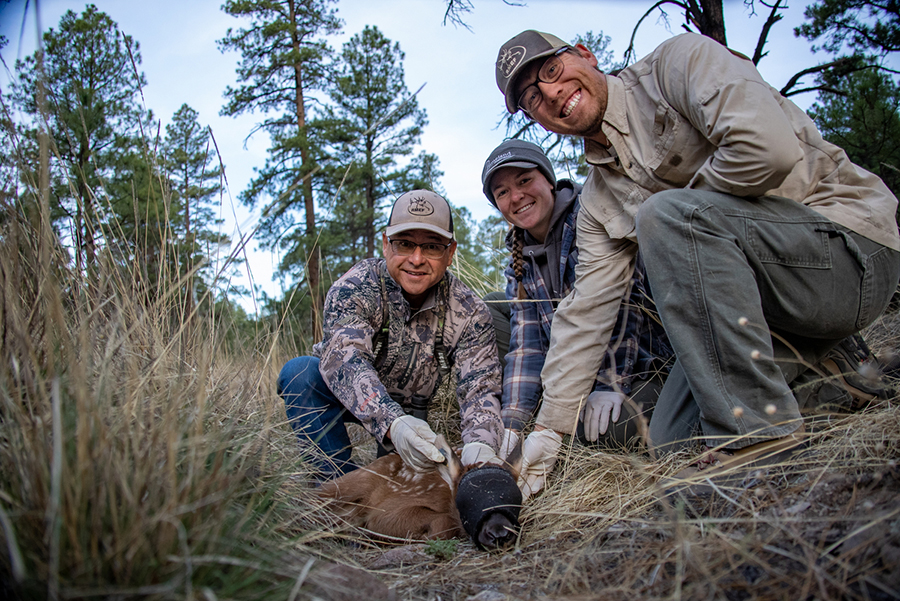100-Yard Zero On A 25-Yard Range?
Developing The “Short Zero” At Your Range
Your customer has a slight problem — he just mounted a new optic to that sweet rifle but doesn’t have convenient access to a long-distance range to zero it. Indoor range owners also have a slight problem — their building isn’t large enough to accommodate a 100-yard indoor range so most had to settle with 25 yards.
Luckily, the solution was developed by a genius named Newton back in the late 1600s. Yes, Sir Isaac Newton and an apple falling from a tree is no different than a bullet dropping out of your barrel.
What Newton helped us discover is the weight (technically, mass) of an object does not affect how it falls. An apple will fall at the same speed as a bullet, and a light bullet will fall at the same speed as a heavy bullet. Gravity affects all objects the same, and if you don’t believe me, watch a YouTube video on bowling balls versus feathers falling in a vacuum.
The “Short Zero”
So why do you (as a proud range owner) and your customers (as proud rifle owners) care? Because it allows us to zero a rifle at your indoor range to simulate any distance you want. We call this the “short zero” and the math to determine where to punch a hole at 25 yards to have the bullet drop right back to a 100-yard (or any) zero is easily accessible from a ballistics calculator. You just need three numbers: scope height, muzzle velocity and the zero distance.
Now the first response I get from everyone on this is that the bullet weight must matter. Well, it does, but not in the way you think — and not in a meaningful way. The weight doesn’t affect the gravitational drop, it affects the ballistic coefficient (BC).
Since most bullets are made from the same materials, a heavier bullet is physically larger than a lighter bullet, which slightly changes its BC. However, the very slight differences in the BC (let’s just call it drag) between a 180-grain bullet and a 150-grain bullet from the same manufacturer is almost negligible for distances under 150 yards.
Again, you probably don’t believe me, so hop onto Hornady’s ballistics calculator website and enter the exact same values everywhere (including BC) in the first calculation but double the bullet weight in the second calculation. The trajectories will match — bullet weight is not a factor.
The above “conversation” we just had is a daily occurrence at Shoot Indoors franchises, so we developed a very simple method you can use at your indoor range. Since most studies show four out of 10 Americans hate math, we cut out all the math that really doesn’t matter and added a shockingly simple calculator to our website to help: www.goshootindoors.com/calculator.
Getting Started
1. Measure the distance from the center of your barrel (barrel axis) to the center of the scope tube (optical axis). This is typically between 1.5″ and 2.5″.
2. Find the muzzle velocity of the ammo being used. This is usually written on the box as muzzle velocity (MV) when it exits the barrel (at 0 yards). If it’s not listed, Google it.
3. Pick the desired zero. Most hunters choose 100 to 150 yards, but it’s dealer’s choice.
These numbers then get entered into our ballistic calculator to calculate the impact point that corresponds to the maximum distance of your indoor range. Our ranges are set up at 20 or 25 yards, so look for the number beside your actual target distance listed on the calculator mentioned above.
In this example, we want a 100-yard zero, but the maximum target distance is 25 yards. To actually simulate a 100-yard zero, the bullet must punch through the target exactly 0.75″ low on a 25-yard target. (If you visit the calculator on our site, you’ll see this is the number next to 25 yards. The number zero is next to 100 yards, since it’s our actual goal.)
Next Step: Actually Shooting
1. Grab a ruler or measuring tape and draw a dot on your target 0.75″ below the bull’s-eye.
2. Place your crosshairs directly on the bull’s-eye, and squeeze off a round or two.
3. Adjust your scope (i.e., start clicking), shoot again and continue this process until the actual bullet hole lines up exactly with the dot you made. We have provided more details on this below.
Once your bullet hole on the 25-yard target lines up precisely with the dot you made, you’re now on the trajectory path for a 100-yard zero. Based on our experience, if you do these above steps correctly, your rifle should not be more than 1″ off the bull’s-eye when you get out to the field to shoot at full distance. We even had a guy send us a thank-you photo of an animal he shot at 200 yards with the rifle he short-zeroed at our 25-yard indoor range (no field testing). I don’t recommend this if avoidable, but as an astrophysicist, I do trust the physics.
Scope Adjustments
Now I know the majority of us hate math, but this is unavoidable for the scope adjustment portion. If your scope has a dial with 0.25 MOA clicks, it means each click will move the impact point 0.25″ at 100 yards (up, down, left or right). If the bullet hole on your 25-yard target is off by 1″, it actually translates into 4″ at 100 yards (100/25 = 4).
To move the impact by 4″ at 100 yards, you will need to make 16 clicks (16*1/4″ = 4″). Essentially, you need to make 16 clicks to move 1″ at 25 yards.
Note: If you’re on a 20-yard range, you’ll need to make 20 clicks to move 1″ at 20 yards. 1″ at 20 yards is actually 5″ at 100 yards (100/20= 5). Twenty clicks on a 0.25″ MOA dial results in a 5″ shift at 100 yards.
Math Shortcut
Measure the distance you’re off from your dot in two directions (up/down and left/right). Remember, up/down and left/right are two different adjustments on your optic. If you are on a 25-yard range, multiply the value by 16 to determine how many clicks you need in that direction. If you’re on a 20-yard range, multiply the value by 20 to determine how many clicks you need in that direction.
Customer Benefit
In summary, this short-zero method is a simple way to save you time and money. It’s a great benefit to shooters who don’t have easy access to long ranges, and it’s a cool trick indoor range and retail operators can show their customers (and maybe help sell a scope in the process).
Once you get good at this method, it will only take five minutes to zero a customer’s rifle. With the average indoor range distance being 25 yards, this is a great service to the industry.

